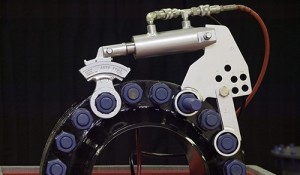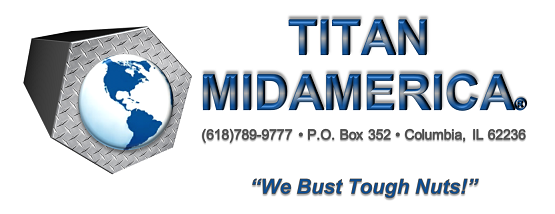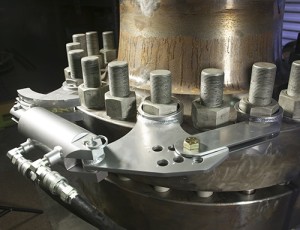LOOSENING BOLTS: UNDERSTANDING THE NEED FOR A SEPARATE HYDRAULIC TORQUE WRENCH

Bolt loosening needs a tough break-out torque wrench like the FASTORQ ThinLINE Hydraulic Torque Wrench.
What’s the harm in using the same torque wrench to make-up and break-out a nut on a bolt? Surprisingly, more than you may realize.
It’s a common misconception that a professional torque wrench can perform both functions equally well. It seems logical that a torque wrench that makes up a nut should also be able to break it out as easily as it made it up. However, this flawed logic doesn’t take certain factors into consideration and often causes productivity and safety to suffer.
The torque required to loosen a nut that has been in service for a while is often 1 ½ to 2 times more than what was needed to tighten it. It’s important to realize that when tightening a nut, conditions are ideal for maximizing bolt load and minimizing the torque requirement.
When you consider additional contributing factors that affect bolt loosening, such as rust, corrosion, paint, lubricant dissipation and stiction (static friction), it’s plain to see that the same torque wrench used for tightening a nut on a bolt will not adequately handle the increased torque requirements that were not present in the make-up process.
Disastrous results can occur when increased torque requirements during break-out push a hydraulic ratcheting torque wrench to its limits. Possible consequences include:
- Breaking teeth off the drive gear or drive pawl.
- Wrench explosion when the housing sides are forced away from the wrench.
- Injury when a square-drive wrench jumps off the bolt and hits a person due to extreme side loading.
- Shattering pieces off the torque wrench, which could cause serious injury to workers.
- Delaying the job because the tool cannot handle the workload
Here is a scenario to consider. If you are using a typical low-profile ratcheting hydraulic torque wrench that has a 4-inch wrench arm on a ratchet link, it only provides limited access to nuts and about 3,300 to 3,800 ft-lb of torque. It is also much more susceptible to breakage when pushed to its limits
To break-out the same size nut, the ThinLINE Hydraulic Torque Wrench, which is specially designed as a break-out torque wrench, gives you 8,640 ft-lb of torque and a 6-inchwrench arm. This is more than twice the torque of other low-profile wrenches. It also provides a lifetime warrantee to back up its claim of being the strongest and most dependable break-out torque wrench.
It’s not hard to see the significant differences between a torque wrench designed for tightening a bolt and one designed exclusively for breaking it out. Strength and power matter.
In addition, it is also important to make sure that your break-out torque wrench fits into tight spaces where they are often needed the most
Take for instance nipple-down projects on wellheads. They often have tight spaces between the wall of the blowout preventer, the nut and the overhead clearance on the bolt. This limited access makes loosening a nut on a bolt challenging. In this instance and others similar to it, you want a break-out torque wrench that has strength and a low-profile design. FASTORQ’s ThinLINE Hydraulic Torque Wrench provides these features and many more.
So, the next time you are faced with bolt loosening challenges, stop risking productivity and safety and go for a break-out torque wrench that is designed specifically to provide the strength and power needed to withstand the difficult conditions of break-out?
Click here to learn more about FASTORQ’s ThinLINE Hydraulic Torque Wrench and why it is the best break-out torque wrench available.
ShareJUL
2013

